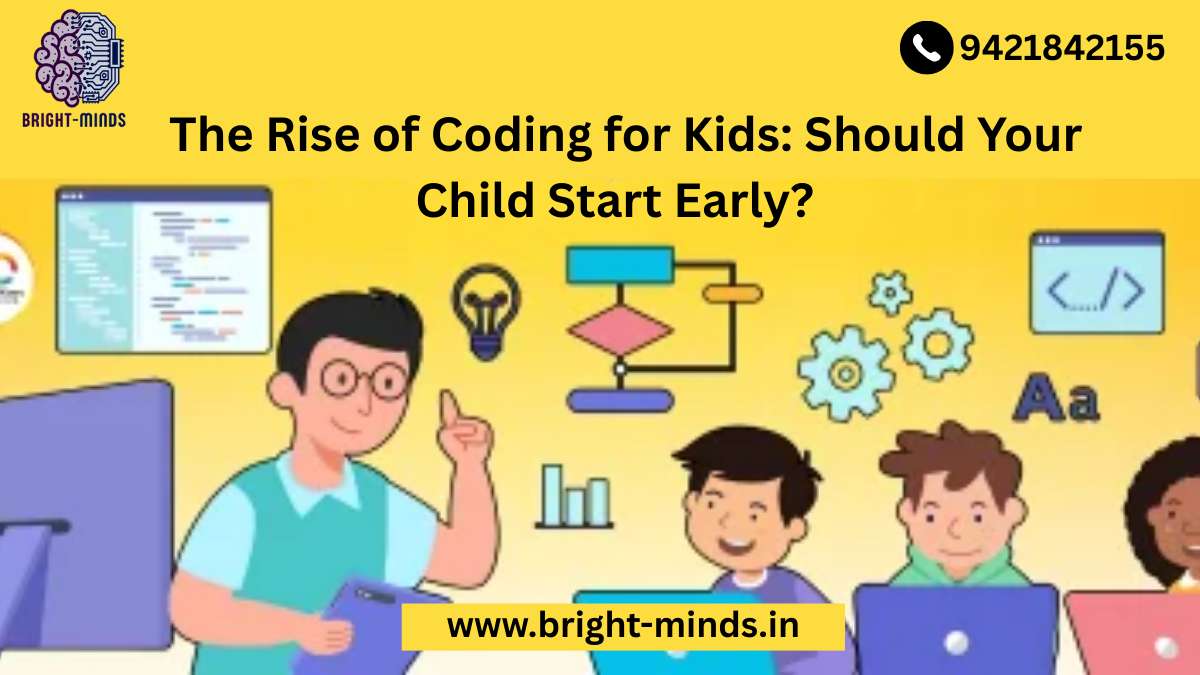Imagine your child solving problems like a pro, designing their own games, or even building a website—all before high school. Sounds futuristic? Not anymore.
Coding is no longer a skill reserved for Silicon Valley engineers or tech-savvy teens. Today, kids as young as five are learning to code—and loving it. As technology continues to reshape every corner of our lives, coding for kids has gone from niche to necessary.
But as a parent or a busy working professional, you might wonder: Should my child start coding early? Is it really worth the time—and the screen time?
This beginner-friendly guide answers your questions, explores current market trends, highlights the benefits of coding for kids, and offers practical tips to help you get started.
📈 Why Coding for Kids Is on the Rise
Let’s start with the big picture.
In a tech-driven world, coding has become a core literacy—just like reading and math. Understanding how technology works is no longer optional; it’s essential. And the earlier kids are exposed to coding, the more naturally they develop computational thinking, problem-solving, and creativity.
🔍 Market Trends
- According to Code.org, there are currently over 500,000 computing jobs open in the U.S., but fewer than 100,000 computer science graduates per year.
- By 2030, the global coding education market is expected to exceed $30 billion, with a significant portion focused on K–12 education.
- Major school districts and after-school programs are integrating coding into STEM curriculums, and companies are offering tech learning benefits for employees’ children.
💡 Insight: Platforms like Scratch, Tynker, and Roblox Studio are seeing millions of young users daily, creating everything from animations to full-fledged games.
🧠 The Real-World Benefits of Early Coding
It’s easy to think coding is just about typing on a keyboard, but its value goes way beyond writing code.
Here’s what kids really gain when they start coding early:
1. Critical Thinking and Problem-Solving
Coding teaches kids to break down complex problems, think logically, and come up with creative solutions.
“My daughter used to get frustrated with puzzles. After learning coding basics, she started seeing problems as challenges instead of roadblocks.” – Ava, parent and HR professional.
2. Confidence and Resilience
Kids quickly learn that bugs (errors) are part of the process. With coding, they fail fast and iterate, building confidence and emotional resilience.
3. Creativity in a Digital Age
From building games to designing apps, coding lets kids bring their wildest ideas to life—all while learning how digital tools really work.
4. Future-Proof Skills
Coding fosters tech fluency, which is a key skill across industries—from marketing and healthcare to entertainment and engineering.
👪 Why Parents and Companies Should Pay Attention
In many households, screen time is a hot topic. But not all screen time is created equal.
When kids are learning to code, they’re not passive consumers. They’re active creators. They’re using logic, math, storytelling, and even art to build something new. That’s high-quality screen time.
If you’re a working parent, your company might even offer family learning resources or STEM programs. Many progressive organizations recognize that supporting employees’ families leads to greater employee satisfaction and retention.
🎯 For Employers:
- Offer coding bootcamps or subscriptions as part of your family benefits.
- Share educational resource lists through internal newsletters or HR portals.
- Encourage tech-driven parenting workshops or speaker sessions for employees.
🧩 How to Get Your Child Started with Coding
The good news? You don’t need to be a software engineer to support your child’s coding journey. Here’s how to begin:
✅ Start with Age-Appropriate Platforms
- Ages 5–8: Try block-based platforms like ScratchJr or Kodable
- Ages 8–12: Move on to Scratch, Tynker, or CodeCombat
- Ages 12+: Explore Python, JavaScript, or web development platforms like Replit
✅ Set Fun Goals
- Create a simple animation
- Design a virtual pet
- Build a mini-game using Scratch
Tip: Celebrate milestones with mini rewards or “demo days” at home where your child shows off their work.
✅ Keep It Social
Coding doesn’t have to be isolating. Encourage collaboration with friends or sign up for online coding clubs and hackathons for kids.
💬 Real-World Example
Meet Liam, age 10.
Liam started learning coding through Scratch and now builds simple games. His parents noticed he became more focused and began planning projects on his own.
“Instead of just playing games, Liam’s now making them—and it’s helping his math skills too,” says his mom, a customer service lead at a tech company.
🚀 Final Thoughts: Should Your Child Start Early?
In a word? Yes.
Early exposure to coding isn’t about turning your child into a software developer (unless they want to be!). It’s about giving them a superpower—the ability to understand, shape, and thrive in a digital world.
You might be interested in this:
Top Amusement and Theme Parks Around the World
Exploring General Knowledge: Gk Questions for Class 1 to 8 with Answers

